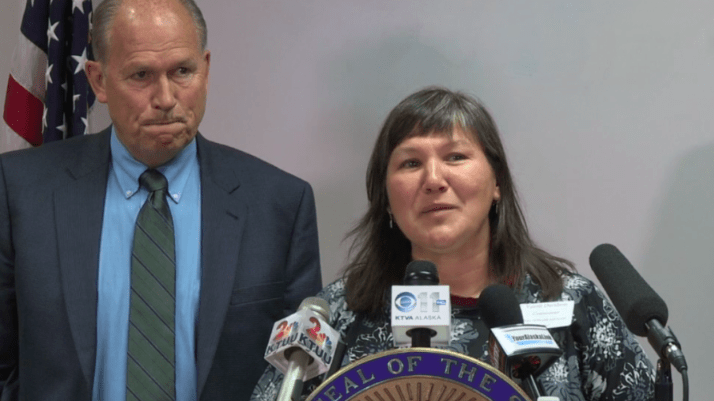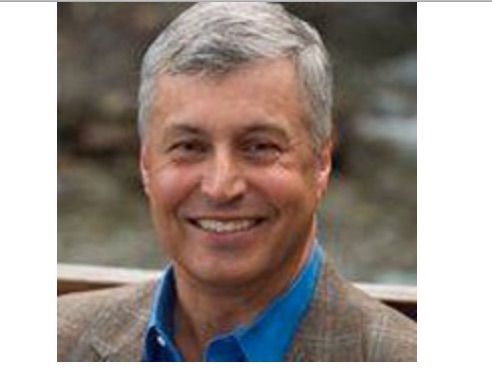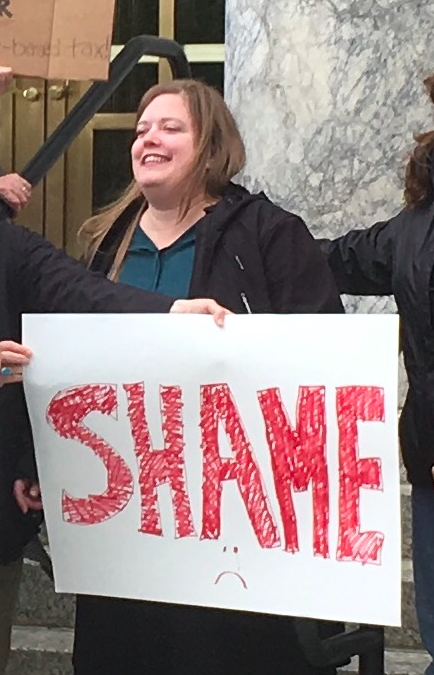By MICHAEL TAVOLIERO
Communism is “a system of government in which the state plans and controls the economy and a single, often authoritarian party holds power, claiming to make progress toward a higher social order in which all goods are equally shared by the people.”
On May 26, an Eagle River resident emailed his District 14 State House Rep. Kelly Merrick, regarding his concern over SJR 6, the governor’s proposal to allow the people to vote on a constitutionally set Permanent Fund dividend formula.
He asked for her support for SJR 6.
What followed was an example which many Alaskans are now witnessing from their state legislators.
What is SJR 6? It was part of the opening public policy platform of the then-new Gov. Dunleavy in 2018. It proposes amendments to the Constitution of the State of Alaska relating to the Alaska Permanent Fund, appropriations from the APF, the APF dividend, and power cost equalization.
Amending the state Constitution requires a vote of the people.
This is part of Rep. Merrick’s response on June 3, 2021:
“Thank you for writing to share your support of SJR 6. As you mentioned, the PFD has become of the biggest debates every year, and like you, I want that to end. The principal would certainly survive any PFD payout, given that the principal is untouchable, but the state may not. Paying out a substantial PFD like those that have been proposed continues to shrink our state revenue options into the future, and shrinking revenue is certainly not something we can afford right now. I’m all for preserving the PFD into the future, and I believe Alaskans want that, as well; with the current formula, there are only a few dividends left before the money’s gone. The same people that are hurting after the last year are also people who need roads to drive on, teachers for their kids, healthcare options, and more. The PFD isn’t the only concern, and SJR 6 doesn’t even address this year’s, or even next year’s, dividend.”
How come every elected communist to the Alaska Legislature since 2015 (the Walker Debacle) has framed the PFD to their constituents as “[one] of the biggest debates every year, and like you, I want that to end.”?
Comrade Merrick explains, “The principal would certainly survive any PFD payout, given that the principal is untouchable, but the state may not.”
The Alaska Deep State has been the only one profiting from the reduced PFD’s since 2015. If the State paid out all “owed” dividend funds since 2015, the Alaska Permanent Fund will still very solvent and continue to grow.
It is this “The Sky Is Falling” attitude that these communists use to argue against even the 50/50 POMV plan, scare their constituents and label their narrative opposing the people’s right to decide such policy issues in favor of their own suspicious motives.
When the communists control Alaska’s economy, freedom is in a vacuum.
There are many people in this state, influential people, who are continually writing their legislators stating the sky is falling, yet have not taken the time to research the present and future financial health of the State of Alaska.
The sky is not falling.
The Permanent Fund is thriving.
The Permanent Fund performance since 2016 has grown in value from almost $52 billion to over $81.5 billion in 2021. That’s an increase in value of about $28 billion or an increase of over 50%. With its rate of return over the past 5 years of almost 11.5%, the future Permanent Fund will hit $100 Billion.
Today’s communists in the Alaska Legislature create excitement through fear mongering and ignoring the facts.
Merrick continues, “Paying out a substantial PFD like those that have been proposed continues to shrink our state revenue options into the future, and shrinking revenue is certainly not something we can afford right now.”
Unless we reduce the size of government, but this is not part of her reasoning.
Alaskans on fixed incomes or in the lowest income brackets are being hit the hardest by the diminished dividend payments.
Diminished dividends are the worst form of taxation.
Every child, every senior citizen, everyone on fixed incomes was hit with the same tax every year going back to 2016.
Under the current economic situation, communists like Merrick cannot support one, only one, larger PFD, whether it is the Statutory Formula ($3,400) or the 50/50 POMV 5.0 Formula ($2,300).
The PFD program is the only way that we can boost the Alaskan economy by touching every Alaskan with a positive financial impact. Every eligible Alaskan!
We have the money in the bank. We do not have to “borrow” or “print” the PFD funds like the federal government does.
How much better off would each eligible Alaskan be all the dividend balances owed to them?
That’s a balance of over $7,000 plus what is owed to us for 2021.
How much have the resident households of Alaska had their revenue options shrink through confiscation of the PFD since 2015?
But let’s talk about the state’s shrinking revenue options into the future.
Due to post pandemic demand and the current federal administration, conservative estimates see the price of oil topping $80 a barrel by the end of 2021, which may also be impacted by demand and production increases. Demand for Alaska’s oil will remain high globally for at least the next thirty years.
Between the Alaska Permanent Fund and natural resource development, Alaska’s revenue options are fertile, unless the communists in the Alaska Legislature who continue to use their scare tactics, delay legislative work, and bloated budgets convince citizens it’s time to sunset the PFD.
The communists sure have done a great job in convincing the uninformed that the sky is falling.
How dare they?
Comrade Merrick continues, “I’m all for preserving the PFD into the future, and I believe Alaskans want that, as well; with the current formula, there are only a few dividends left before the money’s gone.”
Preserving the PFD into the future? There are parents and grandparents and children and grandchildren today who are not benefitting from the PFD program, because of Comrade Merrick’s Marxist ideology of growing government at any cost.
Many conservative legislators have earnestly worked to slow the level of government spending. Decreasing government spending will help our state economy, our fiscal rating, and improve the prosperity of the APF.
But sadly, because of communists like Comrade Merrick, government is the major industry in Alaska. It should not be.
Comrade Merrick is the hold up for the conference committee.
The reality is the 41st member of our House side of the state Legislature, her husband, Joey Merrick, Business Manager of the Laborer’s Union Local 341. He pulls the strings to vanquish the PFD in favor of a larger capital improvements budget. Through his influence and other communists in the House, Comrade Merrick remains the disingenuous and phony conservative. She is the hold up because she wants more capital spending and less PFD. This is no doubt this is a planned concession to the unions.
While the platitudes in her response seem to indicate she is for a PFD payout, her actions and voting show she is not. Please don’t take my word, look at her APOC statement, look at her voting, and look who she associates with.
Michael Tavoliero is a realtor in Eagle River, is active in the Alaska Republican Party and chairs Eaglexit.
Read Because of one vote, the Permanent Fund may be raided.








